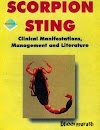In India, Indigenous people are usually referred as ADIVASIS which collectively defines the tribe of India.
The term ‘tribe’ originates from Latin root from term tribuz which means three division into which early romans were grouped. Well, it is yet to be found whether any of the definition fits in for a country like India or not.
India comprises of 104 million or 8.6% indigenous people of the national population. It has the largest tribal population in the world. Its most striking feature is in its enormous diversity. The largest concentration of tribal people is found in seven northeastern states of India, and so called ‘central tribal belt’ that stretches from Rajasthan to West Bengal.
Tribes are autonomous social entities. No tribe claims to be socially superior. In such societies, free mixing of unmarried young men and women is permitted and they are allowed to choose their spouse. In tribal society, there is no dowry system [dowry is one of the flaws in Indian society]. In fact, the practice of bride price is prevalent where groom’s parents compensate the bride’s family with money for the loss of earning member of family.
Tribes lead various movements during British rule such as MUNDA uprising movement and many more for their rights.
Economically, some of these tribal societies still live by hunting and gathering. Others live by stock-breeding, fishing, slash and burn agriculture.
CHALLENGES FACED BY THEM
India is their right to land. Thus, by certain law they are prohibited to sell or transfer their tribal land to people of other countries. However, these tribals are unaware of their own rights due to which a large number of tribes live under the threat of eviction in the name of forest and animal conservation.
The situation of tribal women and girls remains a worrying issue as they are deprived of their rights. Sexual violence, trafficking, killing/branding, rape, etc. remain important issues.
IMPACT DUE TO COVID-19
As we all know COVID-19 has been declared as pandemic and its impact on the world is clearly visible.
Since liberalization many indigenous people have migrated to urban cities to work in unorganized sector. Covid-19 has effected economies and lead to absence of jobs and food, so these migrated workers were forced to return back to their native home; which also makes them prone to carrier of disease, having devastating impact on their indigenous community. Also, lack of healthcare facilities and reach of schemes by government has resulted in uncertainty of survival of such communities.
Thus, each tribe has its own economic differentiation and specific cultural identity and constitutes of a major segment in the multiethnic social fabric of India.
THE LAND IS SACRED
It belongs to the countless numbers who are
Dead; the few who are living, and
Multitudes of those yet to be born
THANK YOU.
Author: Rtr Prachi Chugh
Rotaract club of DAV(C)DENTAL
RID: 3080






0 Comments